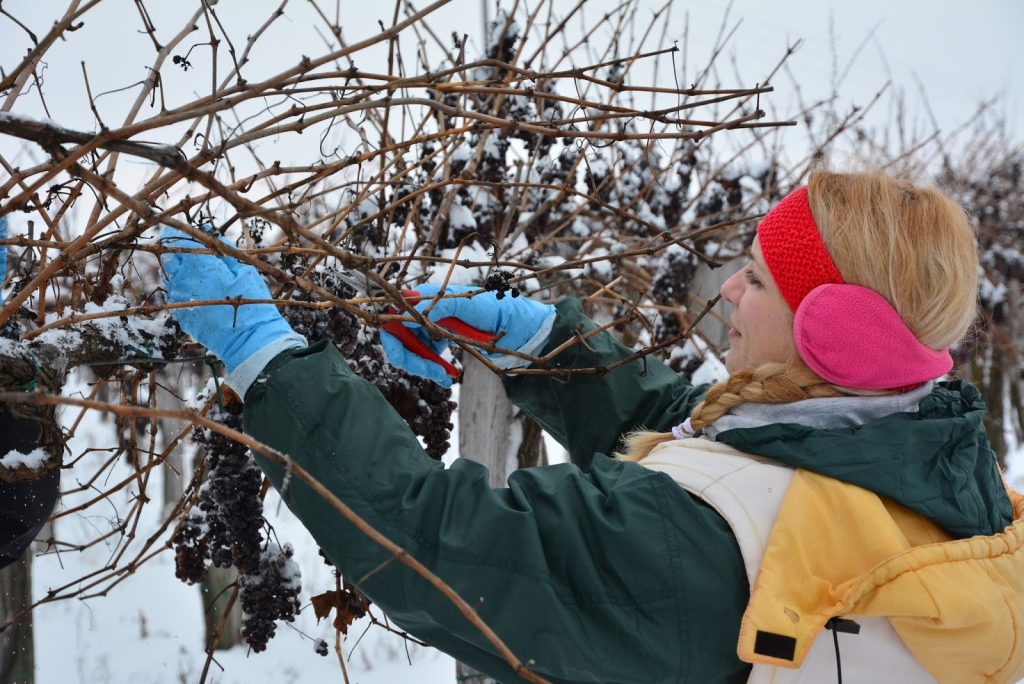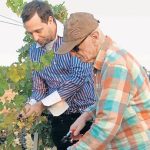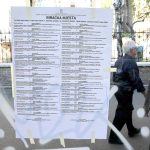The ice harvest is definitely too expensive on the market where there is no real interest for such wines.
“Just as I had through why I had to wait so long, it happened. The temperature was finally under -7 Celsius for three days in a row, a sign it was worth the wait. The ice harvest could begin!” This is how renown Kutjevo wine maker Ivica Perak commented on the cold that froze the continental area of Croatia. He is only one of the “small” wine makers in the east of Croatia who decided to leave half a hectare of attractive vineyards in Mitrovac unharvested for three months after the usual harvest and wait for the prescribed ice harvest conditions that many consider the pinnacle of wine making that rounds up the offer of any wine house.
His colleague and friend Branko Mihalj dared not wait so long and he picked the grapes a week early, making from it, due to an exceptional concentration of sugar, “only” an election harvest of dried grapes. Ivan Enjingi, Croatian wine making legend, did not want to try an ice harvest, as he claims “it is for the colder, northern areas where vineyards cannot nearly achieve the concentration of sugar we have in our grapes. On the other hand, who can today leave their best grapes for an ice harvest and lose over 90 percent of grapes by harvest time!”
“Thank God for these conditions. I have made it to the ice harvest and for me this is the pinnacle. The grapes made it despite birds and a warm winter and is in excellent condition with sugars exceeding 150 oechsl. These conditions are very similar to the ice harvest I had three years ago, and it gave me a wine that received a silver at the great Decanter wine rating in London,” said Ivica Perak.
With half a hectare, the amount Ivica Perak left unharvested for the ice harvest, in regular harvest conditions in September or October he could have made around 4.000 litres of high quality Graševina. This way, risking complete rot of grapes and fearing birds who find the sweet grapes a delicacy, Ivica Perak will be thrilled if he can get from the hardened grapes 500 litres of sweet nectar which can be sold on the market for over 1.000 Kuna per litre. But, ice wine is sold in smaller bottles of 0.25 or 0.375 litres and rarely will a wine maker sell such packages for under 150 or 200 Kuna.
“This also makes me different than others, as a bottle of my ice wine will not exceed 110 Kuna. I know having an ice wine is a matter of prestige, but I do not want to save it in the archives, I want to sell it! On the other hand, considering the ice harvest is the most challenging one that only rare wine makers have, I can say that I have completed a large challenge!”
Ivica Perak is a pioneer of ice harvests in the east of Croatia, as he organised them for the first time as the chief enologist in Kutjevo Cellars 20 years ago.
To harvest over two tonnes of grapes, Perak was helped by eight pickers who made their way from vine to vine all day long in great cold and deep snow. The first sweet drops of wine from this year’s ice harvest are expected near the end of 2017.
Four years ago I was at the ice harvest of Branko Mihalj and that year he was the only one who dared to wait until February for a full day freeze which enabled him to begin the process of producing ice wine, “the crown of predicate wines.” Since hearing of the weather forecast predicting the arrival of Siberian winter in Croatia, Branko Mihalj began preparing like a playful child for his second ice harvest.
“It will be good,” he loudly cheered on himself and several workers who came to help just before sunrise, at -10 Celsius.
He gave me the role of measuring sugar in the grapes. The first grape showed 164 oechsl, second 158, third 146, fourth 178, fifth 177, sixth 177…
“Find a grape with 180 oechsl and you get a reward,” promised Mihalj while he carried on his back a huge plastic bucket in which workers dumped Traminer with mold.
It did not take long. As soon as I warmed up and returned to the vineyard, the first grape had a very high 182 oechsl.
“Fair enough, you’ve earned your reward! I am euphoric as a child, as for me an ice harvest is the highest achievement for any wine maker. Such aromas are especially valued anywhere in the world. My first and only ice harvest, two years ago, I sold almost completely to England. And it was not cheap – 500 Kuna for a 0.375 litre bottle. I picked then 270 vines and got 100 litres of Traminer and 70 litres of Graševina. This ice harvest won’t get my a bigger quantity of ice wine, I won’t make a fortune from it either, or any profit, but – I like to play and prove that games can often make a very good thing,” said Branko Mihalj.
His euphoria went on all day long, radiating with pride when the laboratory confirmed the average sugar for the Traminer is 160 oechsl and 158 for the Graševina.
“With those indicators I have definitely fulfilled all conditions for the wine to be called ice wine. The acid in Traminer is 3.1, pH 4.13, while Graševina has 3.4 acids and 3.9 pH,” said Mihalj.
Krunoslav Bartolović, known for his excellent red wines, also tried his hand in the ice harvest several years ago.
“I must note that I first attempted an ice harvest in 2007, but the story was a flop. Birds ate their way through the entire crop on half a hectare of my vineyard with 50.000 Kuna in damages! It was a Graševina. My first true and only ice harvest yet was in 2009 on 1.5 hectares and 10.000 vines. Then I has rented a vineyard with Rhine Riesling,” said Bartolović.
He opted for the ice harvest as, he claims, the year was made for it. The second reason for an ice harvest was the – challenge. And thirdly, he never hard predicate wines before and wanted to experiment with a rented vineyard.
“We picked on -13 Celsius and I felt like in the Himalayas. My wife said I went into the ice harvest too seriously, as I had planned to pick 10.000 vines! No wonder I got 1.400 litres of ice harvest. I priced it at 95 Kuna for 0.375 litres, which is not cheap, but for that category of wine extremely reasonable,” said Krunoslav Bartolović.
For Baranja wine maker Damir Josić the ice harvest several years ago was a challenge too. In his opinion, every wine maker must try his hand at the ice harvest, if the climate allows.
“From my first and only ice harvest of Graševina I got over 2.000 litres of ice wine. I remember it today, it was -18 Celsius, December 21, 2009, snow, and by the end of the afternoon we had picked grapes on 6 hectares,” said Damir Josić.
Ice harvests in the east of Croatia were attempted by Baranja wine makers Ivan Gregurek and Mirković-Matijević family from the Suza Vallis winery, giant like the Ilok Cellars, Erdut Wineyards, Belje, Misna Vina, kutjevo and Feravino. Slavko Kalazić says he tried an ice harvest one, but it all ended badly.
“I did try in 2007, left four tonnes of Graševina for the ice harvest. When the snow and temperatures fell, there were ideal conditions for an ice harvest, so I went to the vineyard to check the situation before I hire workers. And there I see it all gone. Looking into the snow I see no tracks. Then I look better and see small bird tracks and realise they ate it all. It would have been better if I had sold all the grapes at 10 Kuna,” said Kalazić.
And he decided – never think of an ice harvest! He claims, the ice harvest is only for those who have excess grapes and masochism.
“Ice harvests are of no use to any of us, except to gain good review in ratings and promote the winery. The ice harvest is definitely too expensive on the market where there is no real interest for such wines,” claims Kalazić.
For the original and more from the Vinske Priče blog on wine, click here.











